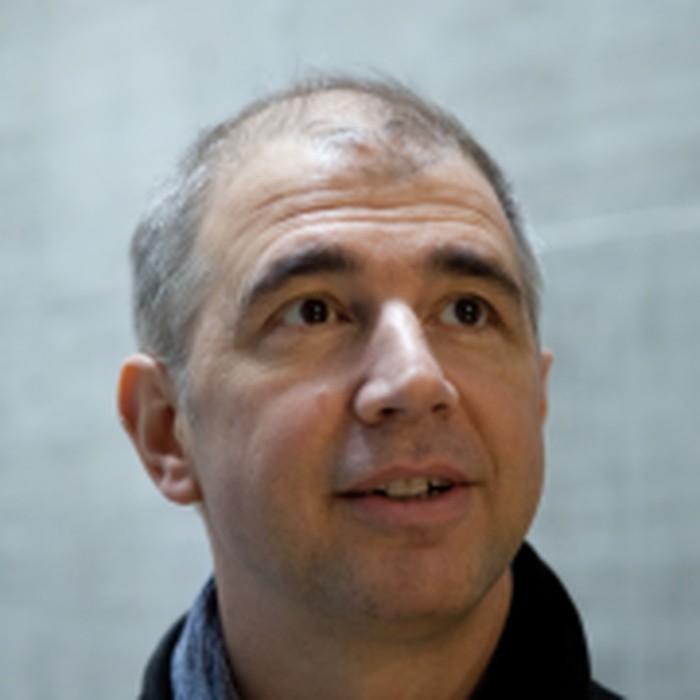
Visiting artist professor
2019 - 2020
Beat Gysin
Born in 1968 in Liestal (Switzerland)
Composer Beat Gysin (1968) studied piano, chemistry, composition (Thomas Kessler, Hanspeter Kyburz) and musical theory (Roland Moser, Detlev Müller-Siemens) in Basel. Born into a family of musicians, he has composed over fifty works, many of them prize-winning, for everything from solo performers to orchestral ensembles. They have been performed by the Quatuor Arditti, the Basler Madrigalisten, the Ensemble Phoenix, the Collegium Novum, the Ensemble Contrechamps, the Ensemble Recherche and (on numerous occasions) the Windspiel and umsn`jip ensembles.
Beyond classical composition, Gysin is particularly interested in the spatiality of sound phenomena. In his work unusual instrumental arrangements and multichannel tape compositions create surprising spatial structures that integrate the music and, increasingly, challenge “Euclidian” three-dimensional listening.
For example, to create the perceptual effects in Derrière un mur de verre and in the chamber opera Marienglas, listeners wore open headphones so that they could listen simultaneously to the music in the concert room and on their headphones. Gysin composed two pieces of music to be heard at the same time, sometimes together and sometimes in completely different spheres. Soon, the audience could not tell if they were hearing the sounds in their headphones or the “real” sounds.
The composer creates “perceptual games” in chosen venues, focusing on the interaction between the musical content and its environment. NUMEN and Music in Industrial Spaces, for example, explore the differences between the acoustics in an industrial space and a concert hall, notably because of the different levels of temperature and humidity in the latter (or the presence of dirt, etc.). We hear differently. Gysin adapts his sounds and his music to the surroundings and forges a unity between the place and the event.
For the subaquatic opera Skamander, for example, and the sound piece Wasserreservoir, the space of the performance was so unusual that it was itself an experience. Listeners to Skamander floated on their backs in a swimming pool, where their heads were supported by the singers, who alternately dipped one or both ears underwater so that they could hear the subaquatic sounds. Wasserreservoir was performed in a hall that had a 30-second echo. The audience was led into the reservoir in total darkness and so never saw the space, but heard it in the seemingly endless reverberation of the music.
In 2011 Gysin founded the studio-klangraum association in order to systematically explore the interaction between certain kinds of space and music. Every two or three years, he conceives and organises a major project with this association and takes it on tour round Switzerland. For each of these projects he creates an accompanying film with Anna Katharina Scheidegger.
In 2015 Gysin created ZeitRäume Basel, a biennial festival “for music and architecture,” which he chairs. The event has already gained an international reputation.
As visiting artist and professor at Le Fresnoy, Gysin has come up with a photography and sound project in collaboration with Anna Katharina Scheidegger titled Quelques gouttes d’éternité (A Few Drops of Eternity), as well as a sound intervention for the intermediary space on Le Fresnoy’s roof area.
Beat Gysin

